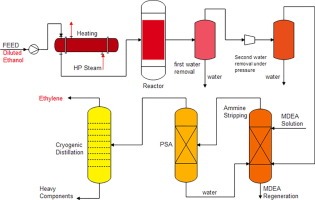Unveiling the Mysteries of Inorganic Chemistry
Table of Contents
ToggleInorganic chemistry, an intriguing and diverse field of science, deals with the study of inorganic and organometallic compounds. Unlike organic chemistry, which is centered around carbon-containing compounds, inorganic chemistry focuses on the entire spectrum of chemical compounds excluding, in most cases, pure carbon compounds. This 1000-word article delves into the fascinating world of inorganic chemistry, exploring its fundamental principles, diverse applications, and the ongoing research that continues to unravel its mysteries.
Introduction to Inorganic Chemistry
Inorganic chemistry encompasses the study of the properties and behaviors of inorganic compounds, which include metals, minerals, and organometallic compounds (compounds that contain metal-to-carbon bonds). This field of chemistry is known for its broad range of subjects, including crystallography, atomic structure, electrochemistry, ceramics, and more.
Understanding the Diversity of Inorganic Compounds
Inorganic compounds exhibit an immense range of diversity in terms of structure and properties. These compounds can range from simple ions and salts to complex silicates and coordination compounds. The study of these compounds involves understanding their formation, structure, properties, reactions, and uses.
Coordination Compounds and Complexes
Coordination compounds play a significant role in inorganic chemistry. These compounds consist of a central metal atom or ion surrounded by molecules or anions, known as ligands. The study of these complexes includes understanding ligand substitution reactions, electron transfer processes, and their applications in various fields.
The Role of Inorganic Chemistry in Industry
Inorganic chemistry has vast industrial applications:
- Catalysts: Many industrial processes rely on inorganic compounds as catalysts. These include the production of fertilizers, refining of petroleum, and polymerization reactions.
- Materials Science: Inorganic compounds are crucial in the development of new materials, such as superconductors, semiconductors, and nanostructured materials.
- Environmental Chemistry: Inorganic chemistry plays a vital role in environmental monitoring and remediation, including the treatment of water and waste management.
Inorganic Chemistry in Everyday Life
The impact of inorganic chemistry can be seen in everyday life. For example, the fluoride in toothpaste (sodium fluoride) helps in preventing dental cavities, while the titanium dioxide in sunscreen provides protection from ultraviolet light.
The Study of Inorganic Elements
Inorganic chemistry involves the study of all the elements in the periodic table and their compounds. This includes understanding the trends in the periodic table, such as electronegativity, ionization energy, and atomic radii, which are crucial for predicting the behavior of elements.
Transition Metals
Transition metals are of particular interest in inorganic chemistry due to their ability to form a variety of complex compounds with different colors, oxidation states, and magnetic properties. The study of these metals includes understanding their coordination chemistry, the role of d-orbitals, and their applications in catalysis and materials science.
Bioinorganic Chemistry
Bioinorganic chemistry is a rapidly growing area that explores the role of inorganic elements and compounds in biological systems. This includes the study of metalloproteins, metalloenzymes, and the role of metals in medicine.
- Metalloproteins and Enzymes: Many biological processes involve metalloproteins, where metals such as iron, copper, and zinc play essential roles.
- Medical Applications: Inorganic compounds are used in diagnosis and treatment, such as gadolinium complexes used in MRI contrast agents and platinum-based drugs used in chemotherapy.
Inorganic Reaction Mechanisms
Understanding the reaction mechanisms in inorganic chemistry is crucial for predicting and controlling chemical reactions. This includes studying redox reactions, acid-base reactions, and the various types of ligand substitution reactions.
Technological Advances in Inorganic Chemistry
Technological advancements have significantly contributed to the development of inorganic chemistry. Techniques such as X-ray crystallography, NMR spectroscopy, and mass spectrometry have provided deeper insights into the structure and properties of inorganic compounds.
The Future of Inorganic Chemistry
The future of inorganic chemistry is filled with potential for new discoveries and innovations. Research is ongoing in areas such as sustainable energy solutions, where inorganic compounds play a role in solar cells and fuel cells, and in nanotechnology, where inorganic chemistry is crucial in the development of nanomaterials.
Conclusion
Inorganic chemistry, with its diverse range of compounds and applications, is a fundamental pillar of the chemical sciences. Its contributions to technology, industry, and medicine are profound and far-reaching. From the fundamental studies of elements and compounds to the advanced applications in technology and medicine, inorganic chemistry continues to unveil the mysteries of the non-organic world, enhancing our understanding of both the natural and the engineered world. As research in this field continues, it promises to bring forth new innovations and solutions to some of the most pressing challenges of our time.











